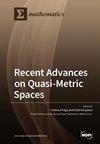Solution of Inverse Photoacoustic Problem for Semiconductors via Phase Neural Network
IF 2.3
3区 数学
Q1 MATHEMATICS
引用次数: 0
Abstract
The inverse photoacoustic problem is an ill-posed mathematical physics problem. There are many methods of solving the inverse photoacoustic problem, from parameter reduction to the development of complex regularization algorithms. The idea of this work is that semiconductor physical properties are determined from phase characteristic measurements because phase measurements are more sensitive than amplitude measurements. To solve the inverse photoacoustic problem, the thermoelastic properties and thickness of the sample are estimated using a neural network approach. The neural network was trained on a large database of photoacoustic phases calculated from a theoretical Si n-type model in the range of 20 Hz to 20 kHz, to which random Gaussian noise was applied. It is shown that in solving the inverse photoacoustic problem, high accuracy and precision can be achieved by applying phase measurement and neural network approaches. This study showed that a multi-parameter inverse problem can be solved using phase networks.通过相位神经网络解决半导体的反向光声问题
反向光声问题是一个难以解决的数学物理问题。解决反向光声问题的方法有很多,从减少参数到开发复杂的正则化算法。这项工作的思路是通过相位特性测量来确定半导体的物理特性,因为相位测量比振幅测量更灵敏。为了解决逆光声学问题,使用神经网络方法估算样品的热弹性特性和厚度。神经网络是在一个大型光声相位数据库上进行训练的,该数据库是根据 20 Hz 至 20 kHz 范围内的硅 n 型理论模型计算得出的,其中应用了随机高斯噪声。研究表明,在解决反向光声问题时,应用相位测量和神经网络方法可以实现高精度和高准确度。这项研究表明,利用相位网络可以解决多参数逆问题。
本文章由计算机程序翻译,如有差异,请以英文原文为准。
求助全文
约1分钟内获得全文
求助全文
来源期刊

Mathematics
Mathematics-General Mathematics
CiteScore
4.00
自引率
16.70%
发文量
4032
审稿时长
21.9 days
期刊介绍:
Mathematics (ISSN 2227-7390) is an international, open access journal which provides an advanced forum for studies related to mathematical sciences. It devotes exclusively to the publication of high-quality reviews, regular research papers and short communications in all areas of pure and applied mathematics. Mathematics also publishes timely and thorough survey articles on current trends, new theoretical techniques, novel ideas and new mathematical tools in different branches of mathematics.
 求助内容:
求助内容: 应助结果提醒方式:
应助结果提醒方式:


